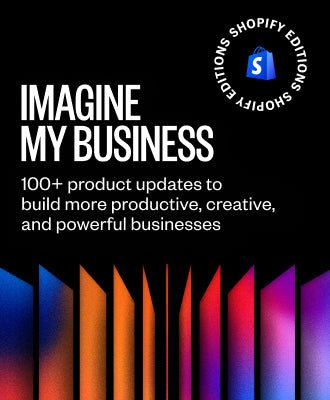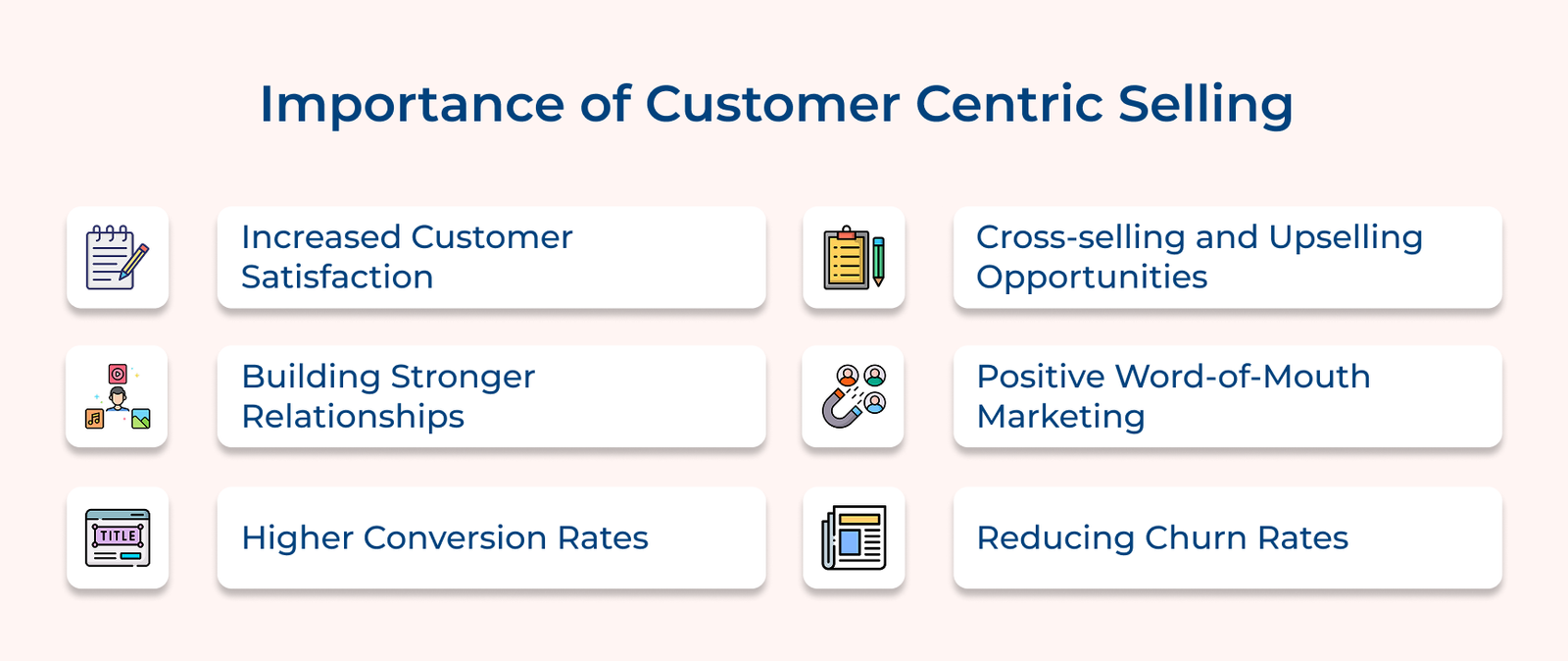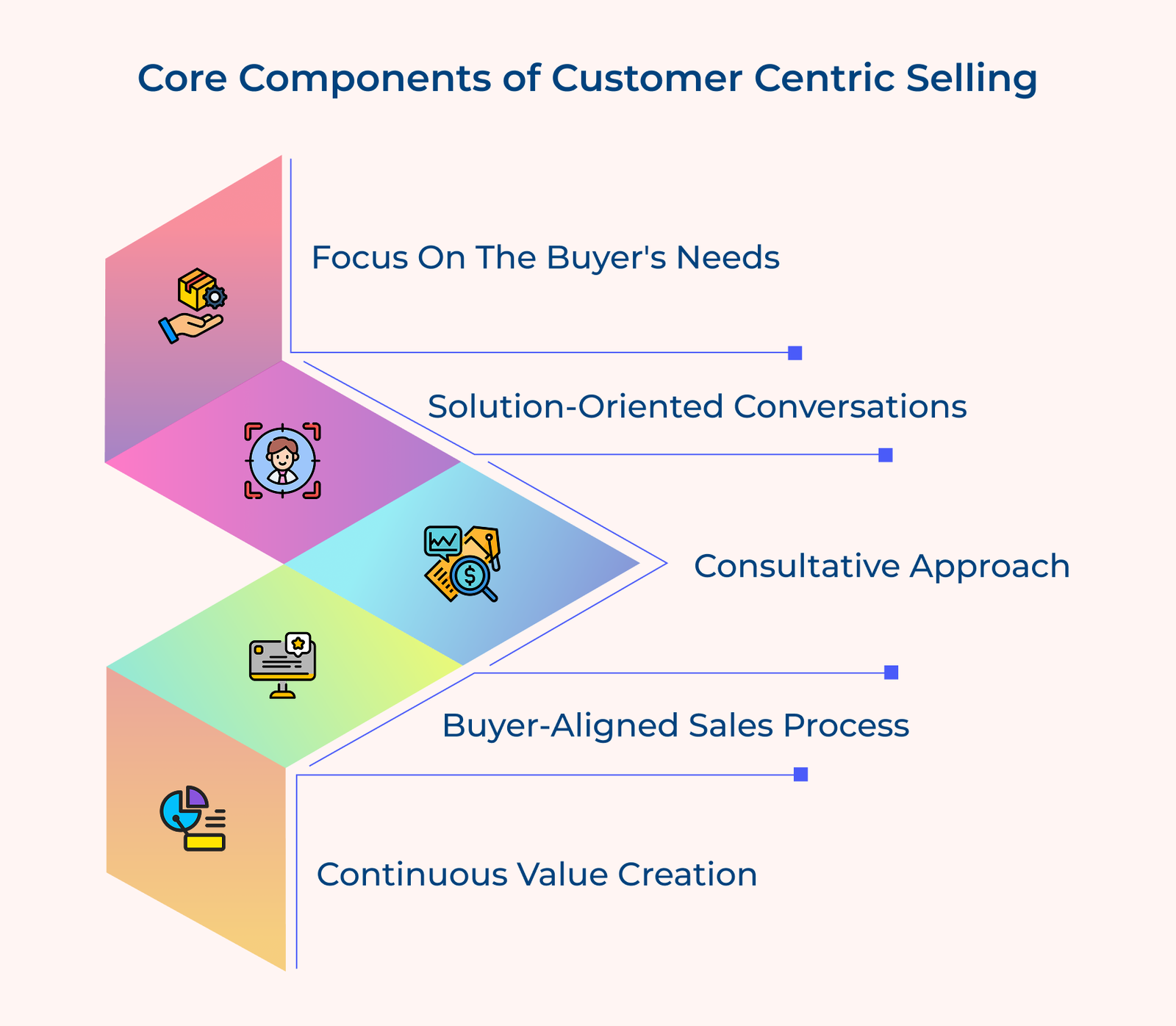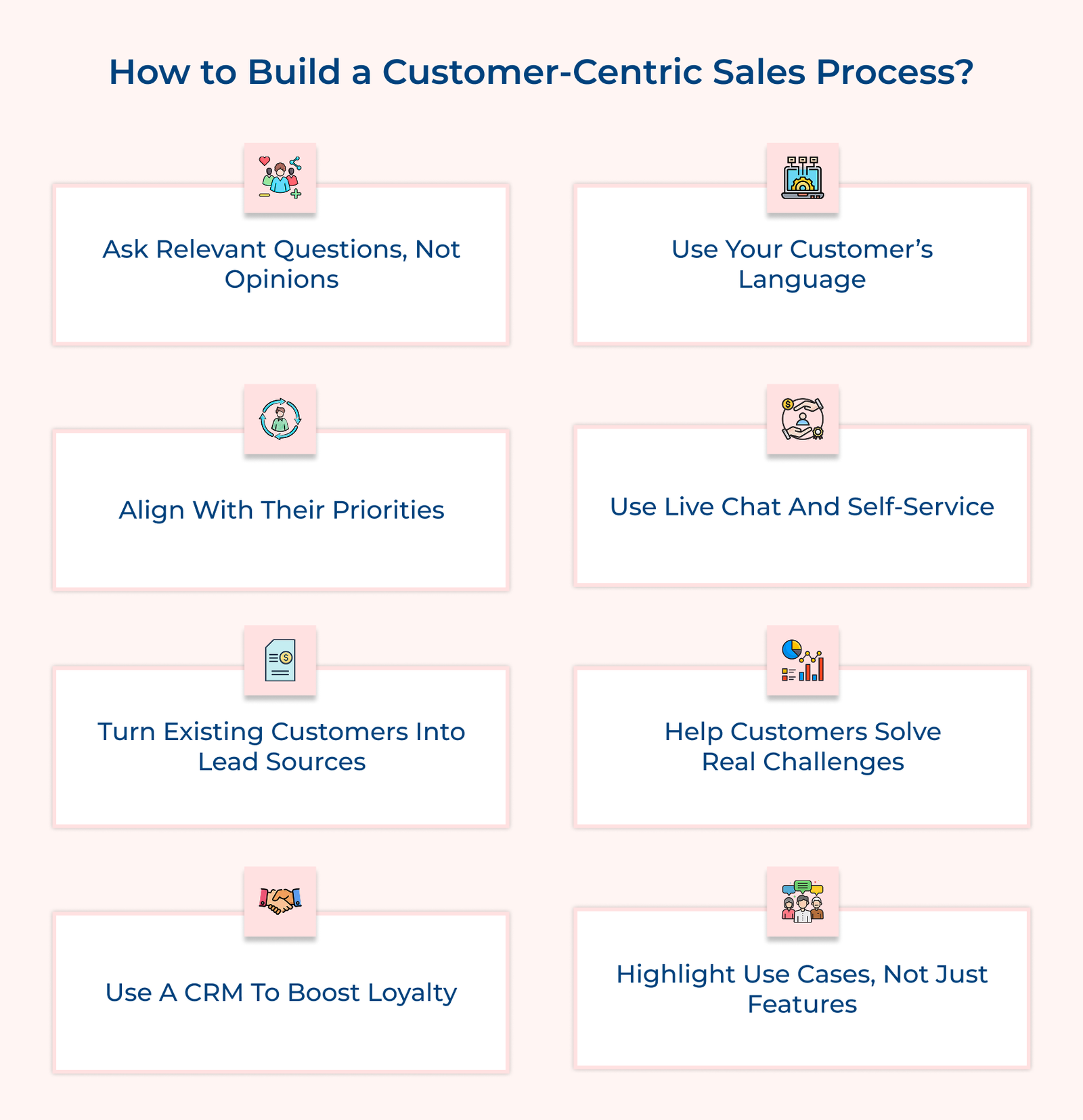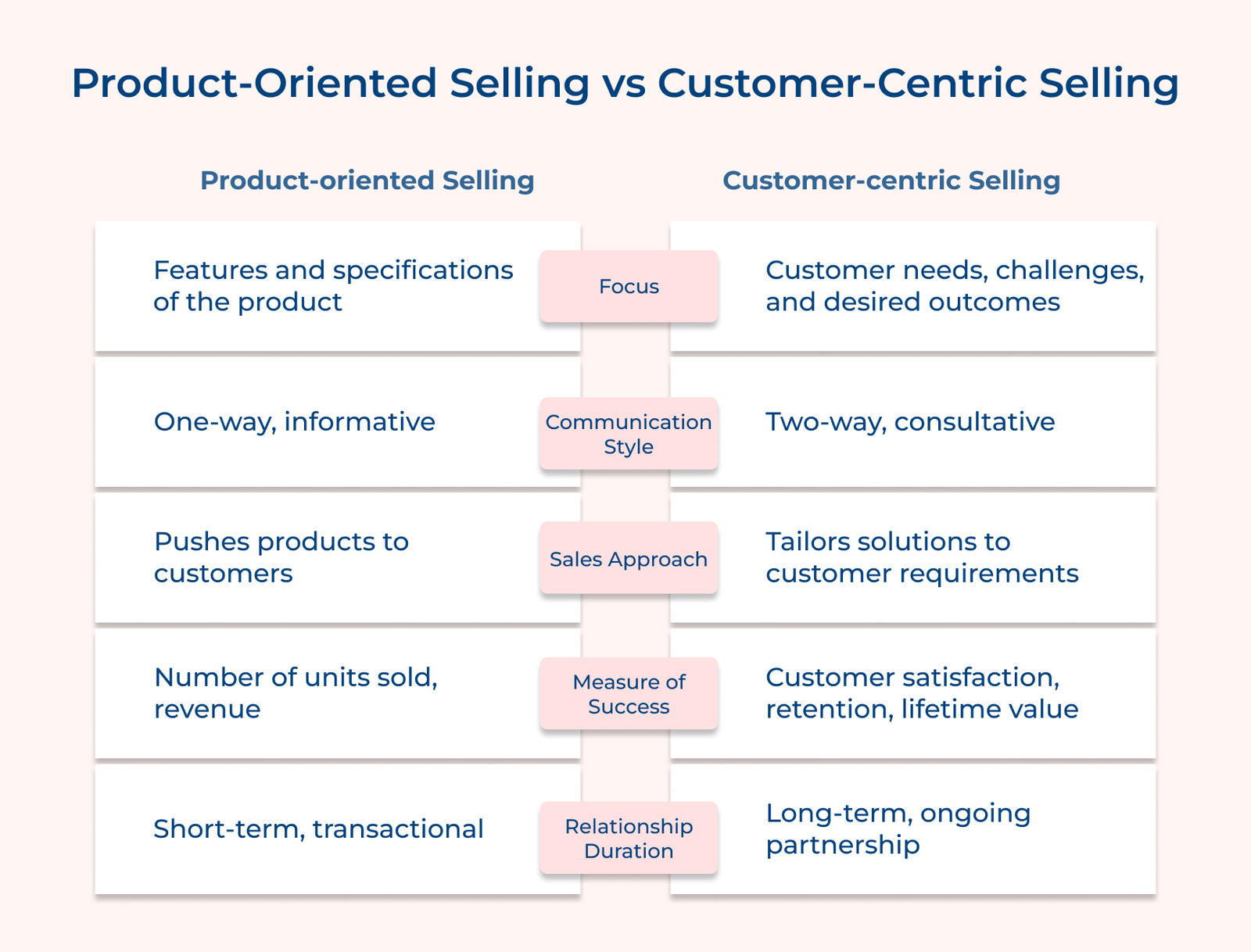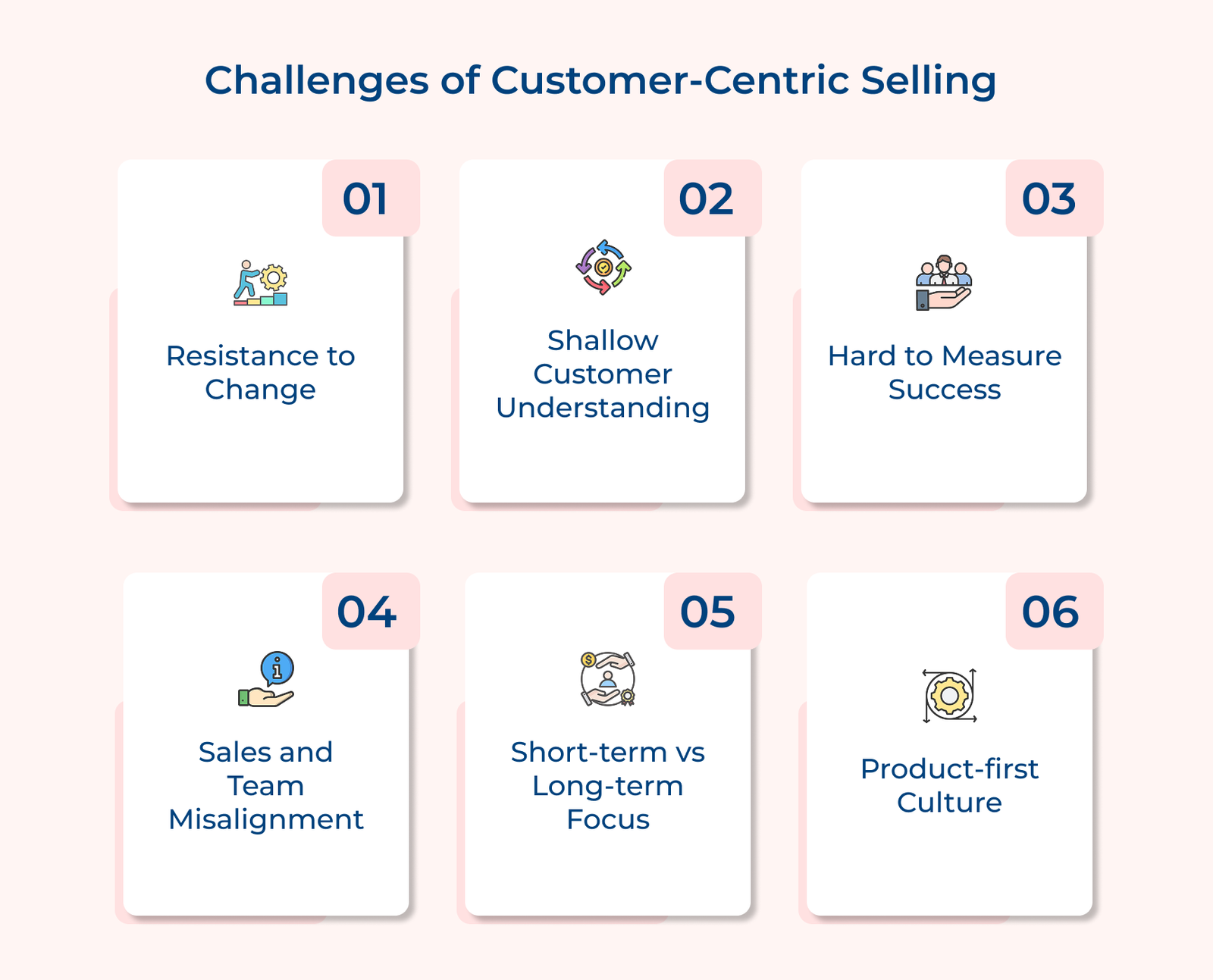1. Ask Relevant Questions Instead of Offering Your Opinion
Active listening means fully engaging with the customer, grasping their message and responding thoughtfully. It not only uncovers valuable insights about their needs and challenges but also lays the groundwork for a personalized sales approach.
Using effective questioning techniques, like open-ended and probing questions, helps reveal deeper customer needs. Sales representatives can provide more relevant solutions, enhance trust and boost the chances of closing deals by prioritizing inquiry over assumptions.
Best practices::
- Adopt the “2:1 ratio” rule: listen for two minutes for every minute you speak, allowing you to gather more insights than you share.
- Utilize the SPIN questioning technique—covering Situation, Problem, Implication and Need-payoff to systematically uncover customer needs.
2. Speak Your Customer’s Language
Tailoring your communication to each customer is vital in customer-centric selling. You ensure your message is clearly understood by adapting your language, tone and style to match their preferences, boosting engagement.
Using the customer’s terminology builds rapport and trust. When they see you as a trusted advisor rather than just a salesperson, it enhances stronger, long-lasting relationships.
Pro tips:
- Develop customer personas that outline communication preferences and train your sales team to tailor their approach.
- Regularly refresh your sales materials to incorporate industry-specific terminology that resonates with your target audience.
3. Align Yourself with Your Customer’s Priorities and Alleviate Fears
Understanding customer goals and concerns is essential for customer-centric selling. Researching their industry, company and role provides insights into their priorities. You can present your product or service as a direct solution to their pressing needs by aligning your approach with these factors.
Adopt an empathetic, solution-oriented mindset to effectively address pain points. Show how your offering alleviates specific concerns and contributes to their success. The alignment not only builds credibility and trust but also enhances the perceived relevance of your solution, increasing the chances of a successful sale.
Actionable tips:
- Conduct thorough pre-sales research on each prospect, exploring their company’s recent news, industry trends and potential challenges.
- Create a “pain point matrix” that links common customer concerns to specific features or benefits of your product or service, making it easier to tailor your pitch effectively.
4. Adopt a Live Chat Tool and Self-Service
Real-time customer support via live chat tools boosts the customer experience and conversion rates by offering immediate assistance. Quick answers reduce friction in the sales process and foster trust in your brand’s commitment to service. 67% of customers prefer self-service options over speaking to an agent.
Comprehensive self-service resources empower customers to independently find information, catering to those who prefer self-directed research. It can include FAQs, knowledge bases, video tutorials and community forums.
Actionable tips:
- Deploy a chatbot for initial customer interactions, equipped to handle common queries and smoothly escalate complex issues to human agents.
- Develop a user-friendly, searchable knowledge base that is regularly updated with content derived from common customer inquiries and feedback.
5. Leverage Existing Customers to Generate More Leads
Customer referrals are a potent asset in customer-centric selling, bringing inherent trust and credibility. When satisfied customers recommend your product or service, it can lower acquisition costs and attract high-quality leads that are more likely to convert.
Encourage referrals through structured programs, loyalty rewards or by delivering exceptional service that inspires customers to share their positive experiences. Highlighting customer success stories in your marketing not only provides social proof but also helps potential clients envision the benefits of your solution.
Best practices:
- Establish a tiered referral program that offers escalating rewards for multiple successful referrals, enhancing continuous engagement.
- Create a categorized library of diverse customer success stories by industry and use case, equipping sales representatives with compelling narratives for their pitches.
6. Empower a Customer to Overcome Challenges
Offering educational resources and training is essential for empowering customers to fully leverage your product or service. It can include webinars, tutorials, user guides and hands-on sessions. You can show your commitment to their success and help them achieve goals by investing in customer education.
Proactive support goes beyond mere problem-solving, it involves anticipating customer needs and providing timely advice. The approach boosts customer confidence, resulting in greater satisfaction, loyalty and potential for expanded usage or upgrades.
Pro tips:
- Create a structured onboarding program for new customers that features personalized training sessions and milestone check-ins.
- Establish a proactive outreach system where account managers regularly engage customers with usage tips, updates on new features and tailored optimization suggestions.
7. Adopt a CRM Model to Increase Customer Loyalty
CRM systems are vital for customer-centric selling, enabling businesses to centralize data, track interactions and personalize engagement. CRMs empower sales teams to tailor their approach, anticipate needs and deliver consistent, high-quality service across all channels with a comprehensive view of each customer.
An effective CRM for the approach should include features like contact management, interaction tracking, sales forecasting and analytics. The tools help businesses segment customers, identify trends and make data-driven decisions that enhance the customer experience.
Actionable tips:
- Integrate your CRM with other business tools like marketing automation and customer service platforms to create a seamless customer data ecosystem.
- Hold regular data review sessions with your sales team to spot trends, identify at-risk accounts and uncover upselling opportunities.
8. Promote Product Use Cases Instead of Features
Transitioning from feature-focused to solution-focused selling means highlighting how your product addresses specific customer challenges and achieves their goals. It makes your offering more relevant and valuable.
Use case studies, testimonials and real-world examples to illustrate practical benefits, helping potential customers envision how your solution fits into their context. The approach not only deepens their understanding but also boosts engagement.
Actionable tips:
- Build a library of industry-specific use cases featuring ROI calculations and success metrics for sales reps to reference in their pitches.
- Create an interactive product demo that lets potential customers explore relevant use cases tailored to their industry or role.
Examples of Customer-Centric Selling
Check the below listed customer-centric selling examples that illustrate how the best businesses connect with their audience, enhance trust and drive success.
1. Amazon
Amazon has been a trailblazer in customer-centric selling since day one. They created a personalized recommendation system that leverages browsing and purchase history, along with ratings for authentic feedback. Features like “one-click” ordering and hassle-free returns streamline the buying process, enhancing customer convenience.
The strategy has propelled Amazon to become one of the world’s most valuable companies, enhancing immense customer loyalty, particularly with millions of Prime subscribers. Their net sales skyrocketed from $61 billion in 2012 to $386 billion in 2020, largely driven by their unwavering focus on customers.
2. Zappos
Zappos, the online shoe and clothing retailer, centered its entire business model on exceptional customer service. They introduced a 365-day return policy and free shipping both ways, eliminating risk for shoppers. Their customer service reps were empowered to go the extra mile, even if it meant longer calls or directing customers to competitors if Zappos couldn’t meet their needs.
The customer-first approach fueled remarkable growth and loyalty. Amazon acquired Zappos for $1.2 billion in 2009. Zappos had surpassed $2 billion in annual sales by 2015, with a remarkable 75% of purchases coming from repeat customers.
3. Starbucks
Starbucks embraced a customer-centric strategy with its rewards program and mobile app, enabling customers to order, pay in advance, customize drinks or earn rewards. They actively seek customer feedback to enhance their offerings.
As of 2021, the Starbucks Rewards program boasted over 19 million active members, with mobile orders making up 26% of U.S. company-operated transactions in Q1 2021. Despite COVID-19 challenges, the focus on customer experience has helped maintain loyalty and support recovery.
4. Netflix
Netflix transformed the entertainment landscape through its customer-centric approach, featuring a smart recommendation algorithm that tailors content suggestions based on viewing history. They also invested significantly in original programming aligned with viewer preferences.
Evolving from a DVD rental service to the world’s top streaming platform, Netflix had over 208 million paid memberships by Q1 2021. The focus on customer experience has resulted in high engagement, with the average subscriber spending about 3.2 hours daily on the platform.
5. Apple
Apple’s customer-centric strategy centers on creating a cohesive ecosystem of products and services. They introduced the Genius Bar for in-store support and designed Apple Stores as experiential spaces where customers can explore products. Apple enhances the customer experience with a strong focus on user-friendly design and intuitive interfaces.
The approach has cultivated a fiercely loyal customer base and elevated Apple to premium brand status. Apple became the world’s first trillion-dollar company by market capitalization in 2018 and by 2021, its brand value soared to an estimated $263.4 billion, making it the most valuable brand globally.
Product-Oriented Selling vs Customer-Centric Selling
Businesses must understand the differences between product-oriented and customer-centric selling to stand out from the competition.





